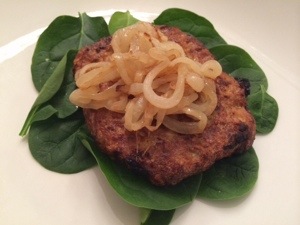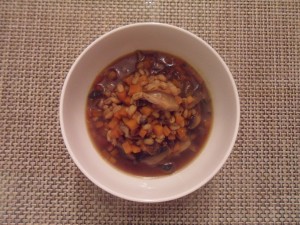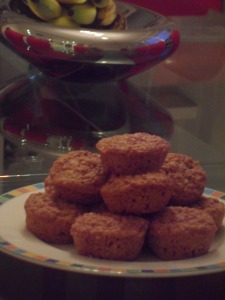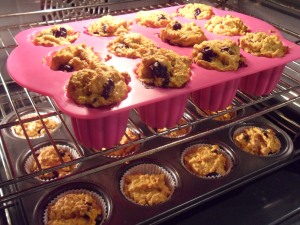After weeks and weeks of nothing but grey skies and drizzle, we have finally had a sunny weekend. We spent the morning at the zoo (“Joe, what would you like to see at the zoo today?” “I want to sit in the bus and the car that move next to the merrygoround”) and the afternoon playing in our friends’ garden. As we sat in the car driving to our friends, my phone beeped. A text from my friend Steve:
Think I’m going to have a cigarette in the sun now I know the trophy doesn’t exist.
I felt a brief flicker of guilt. Steve is an ex-smoker. I hate smoking and sometimes I have to stop myself from saying “DisGUSting” out loud when I walk past someone smoking in the street. Steve stopped smoking three years ago, or maybe it’s closer to four, and when he told us he’d stopped (“like, properly, this time”) Jon and I were very proud of him and we told him that if he could stay cigarette free for a year, we would get him a trophy. Throughout that year, whenever we saw him, he would say things like, “how’s the trophy coming along?” or, “only 6/7/8 months til I get my trophy!” My Grandpa, who used to be a jeweller, still, at the age of 93, has his engraving machine and does engraving for golf club trophies and the like. I knew he would have a few trophies and he would engrave one for us for Steve. Unfortunately, when we asked him, he said he’d just got rid of most of his stock but he had one or two left and we could have one of those – a choice of a bird or a ball. Neither of these seemed particularly appropriate but we thought maybe we’d take the bird and think of something funny to engrave it with that would make the random bird into something super witty about smoking.
Well, Jon and I aren’t that witty because we’ve been trying to think of a funny line to engrave the bird trophy with for around three years and we still haven’t come up with anything (“I think that’s a bit unfair,” Jon interjected while reading this over my shoulder. “I could have thought of any number of witty things if the trophy had been better.”) Meanwhile, Steve has been smoke free for ages and the longer it gets the more deserving of a trophy he becomes and the more pathetic the bird trophy seems. At the same time, we’re starting to feel like it is the promise of a trophy that is keeping him smoke free and so we are genuinely concerned that if he gets the trophy he’ll celebrate with a cigarette. I’ve now told him this trophy can only legitimately be awarded posthumously, as only then can anyone say with certainty that he is no longer a smoker. The trophy is no longer significant as a tangible object, but has turned into a symbol of aspiration. Or something.
Poor Steve. If that story about the trophy didn’t make you think I’m a terrible friend then this one will: a couple of years ago, Steve announced he was becoming vegetarian. I know, smoking AND meat! What pleasures will he renounce next?! Clearly no trophies were going to be awarded by me for this crazy decision. However, like any supportive friend, when he told me this about 30 minutes before inviting himself for dinner I found something nutritious and hopefully delicious to eat.
A few weeks later, he was at our house again for dinner along with another friend. It was a Sunday evening and we’d been lazing around all afternoon and I didn’t feel like doing a lot of cooking but I wanted something really tasty and sort of junk food-ish but not unhealthy. The answer was, as it so often is to so many hungry moments: burgers. I didn’t have any beef mince and I wanted something healthier anyway, so I took out a pack of chicken mince. The secret to chicken burgers is to put loads and loads of seasoning and things because unlike beef burgers where you want to taste the meat, a chicken burger would just be incredibly bland on its own. I grilled the burgers, fried some onions and made some oven chips (invest in a crinkle cutter for potatoes. About £2 and it’s one of the best kitchen gadgets you’ll own) and served them up. Everyone ate in silence in that way that shows that the food is really being enjoyed and it wasn’t until I put my own knife and fork down that something dawned on me and I turned to Steve and said, “hey, aren’t you a vegetarian?” Steve, with chicken juice and ketchup dribbling down his chin said, “oh s/*^!…. ”
I did feel a tiny bit bad but I maintain that it should be the job of the vegetarian to remember that he is a vegetarian.
(I should add that this burger has been Steve’s only slip as a vegetarian and he has been fully non-meat-eating since then!)
- 1 pound chicken mince
- 1 large onion
- 1 egg
- Matzo meal (medium) or flour if you don’t have matzo meal
- Light soy sauce
- Cajun spice mix
- Tabasco
- Salt and pepper
- A little oil (groundnut is best)
1. Finely dice the onion. Heat the oil in a frying pan and add the onion, cooking until it is soft and golden.
2. Put the onion in a large bowl with the meat, and mix. Add the egg, and around 50g of matzo meal – you want to get to a texture that looks like it will hold a shape.
3. Add lots of the seasoning listed. I usually include around 2 tablespoons of soy sauce, a large tablespoon of Cajun spice, and a teaspoon of Tabasco. Mix it all together thoroughly and then form into burgers. I find that this quantity of meat makes enough for 4 burgers, and it is easiest if you heap the mixture onto a sheet of clingfilm, wrap it and then squash it into shape. Refrigerate before cooking, if you have time.
4. Cook under a hot grill (or on a barbecue for even yummier results), flipping half way through so that it is blackened on each side.
Good on its own, in a bun or pitta, or on a bed of leaves. Best served to a vegetarian.
*Approximate nutritional values (1 burger)*
- Calories: 310 kcal
- Carbs: 15.4g
- Fat: 15.6g
- Protein: 26.7g
- Sugar: 6.8g
- Sodium: 1864mg
*Baby-friendly version*
This is perfect for babies. Just remove the baby’s portion before adding the seasoning and add a little less or whatever your baby likes. For Joe I use a tiny bit of soy sauce (as it is so salty), and add tomato purée, and mustard powder.
















